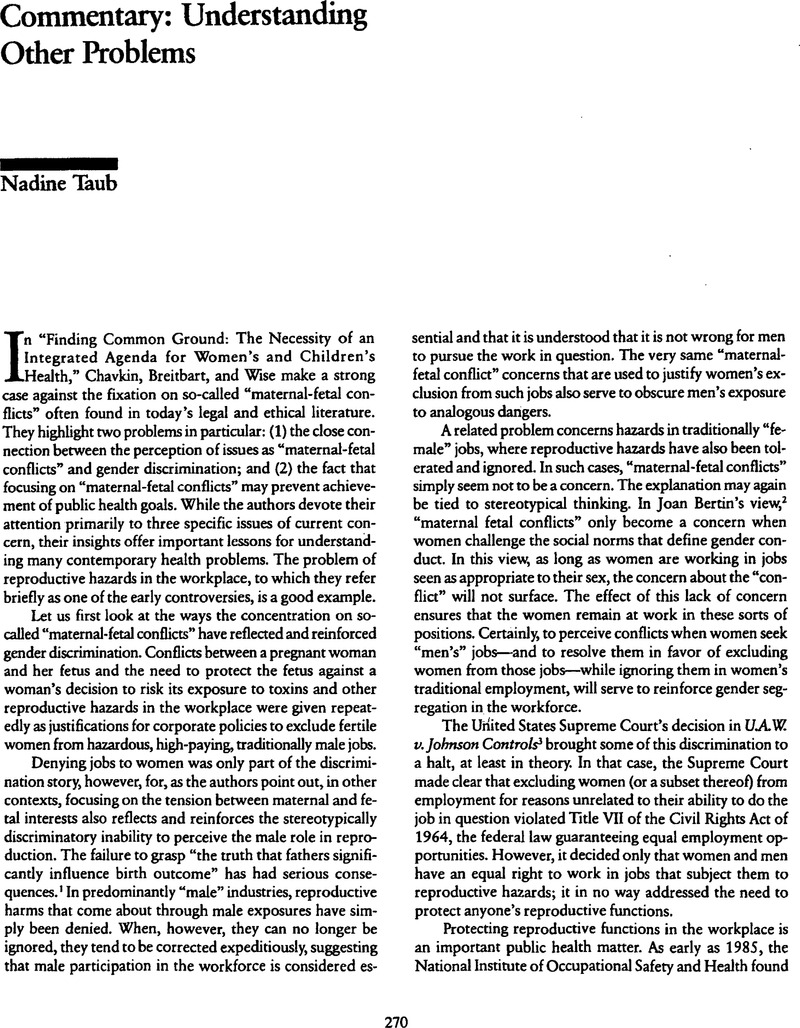No CrossRef data available.
Article contents
Commentary: Understanding other Problems
Published online by Cambridge University Press: 01 January 2021
Abstract
An abstract is not available for this content so a preview has been provided. Please use the Get access link above for information on how to access this content.

- Type
- Article
- Information
- Copyright
- Copyright © American Society of Law, Medicine and Ethics 1994
References
Bertin, Joan, “Reproductive Hazards in the Workplace: Lessons from UAW v. Johnson Controls,” in Needleman, Herbert L. Bellinger, David, eds., Prenatal Exposure to Toxicants: Developmental Consequences (Baltimore: Johns Hopkins University Press, 1994), pp. 297–316.Google Scholar
499 U.S. 187 (1991).Google Scholar
U.S. Dept. of Health and Human Services, Centers for Disease Control, “Leading Work-Related Diseases and Injuries—United States,” Morbidity and Mortality Weekly Report, 34, no. 35 (1985): 37–40.Google Scholar
Clauss, Carin Berzon, Marsha Bertin, Joan, “Litigating Reproductive and Developmental Health in the Aftermath of UAW versus Johnson Controls,” Environmental Health Perspectives, 101, supp. 2 (1993): 205–20.Google Scholar
For example, eligibility for benefits under Norwegian provisions affording some women special entitlements and temporary leaves from hazardous work assignments during pregnancy is determined by factors used in predicting birth outcome only. Strand, Kitty, “Gender, Work and Reproduction: The Example of the Health Care Area,” presentation at the ProHealth Care Conference, Stockholm, June 27, 1994.Google Scholar




